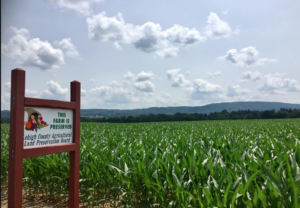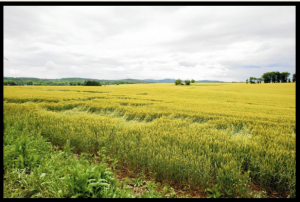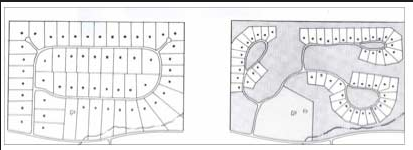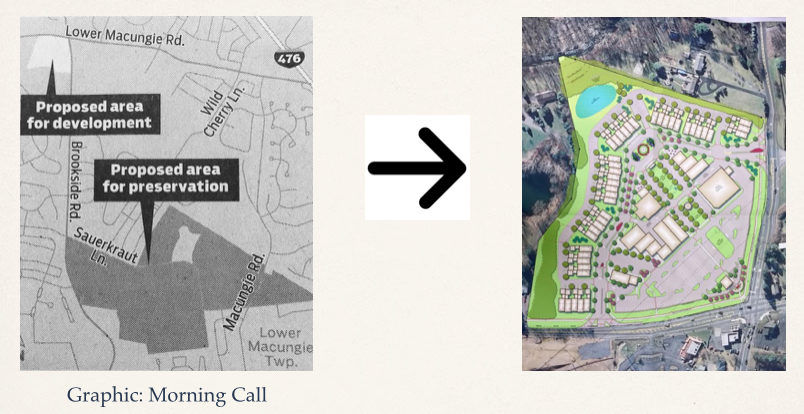Lower Macungie has accomplished many of the goals laid out 11 years ago in the 2020 visioning statement.
In 2009 Commissioners appointed 24 citizens to serve on a committee charged with preparing a statement to envision what Lower Macungie would be like in the year 2020. The committee consulted with residents through a public meeting and a questionnaire. They worked in small groups to develop statements on; Quality of Life; Planning and Land Use; Parks and Recreation; Public Safety; and Community Government. The work produced an aspirational document that has been used by Commissioners and staff as a resource. So here we are, the year 2020. A logical time to look back at the 2020 document and see how we did. Over the next few days, I’m going to make a series of posts overviewing one section of the document at a time outlining what’s been accomplished and what we still need to work on relative to that area. I’m also sending these updates to the original committee members.
Section 1 – Quality of Life
The 2020 visioning document stated: “Citizens of Lower Macungie will enjoy outstanding quality of life in their community, especially: the educational system, our parks and recreation programs, and preserved farmland and open space. Citizens will be able to travel safely to facilities, activities, and events in the community through trails. bikeways, and greenways that connect neighborhoods, parks, commercial districts, and the Town Center. The community’s government and School District will collaborate and cooperate to ensure maximum use of local resources to benefit all citizens.”
This conversation begins with the successful farmland and open space preservation program. Over the last 5 years, Lower Macungie has permanently preserved well over 500-acres of farmland and open space through various strategies. This includes one of the biggest preservation efforts of it’s kind in Lehigh County history. The permanent preservation of the 190-acre Weiner Farm on Brookside and Sauerkraut Rd.
The following farms and open space properties are some of the highlights of what has been preserved over the last 10 years:
- Swallow Farm 22 acres Mountain Rd.
- Kirby Farm 66 acres Rt. 100
- Weiner Farm 190 acres Sauerkraut, Brookside & Macungie Rd.
- Krause Farm Mountain Rd.
- Dixon Farm 11 acres Spring Creek Rd.
- Smith Farm Mountain Rd.
- 70% public open space preserved in a 100-acre development project on Gehman Rd.
- Campbell Tract Purchase (addition to camp Olympic) 16-acres
- The Heim Farm 55 acres Mountain Rd.
Moving forward we continue to look for more opportunities to preserve farmland and open space. We should be finalizing the preservation of an additional 150-acre farm property in the next few weeks.
The quality of life section also envisioned a township greenway. Since 2009, a master plan was adopted in 2012 and the first major section of the planned greenway, a half-mile in total was completed between Wild Cherry Ln. and Brookside Rd. Completing the greenway will take many years. But we’ve got a great start with this section adding to pre-existing sections that pre-date the formal plan. A challenge is securing the funding to complete the project.
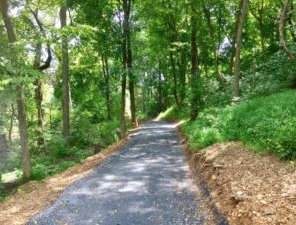
The first major section of the Lower Macungie Township Greenway to be constructed after adoption of the 2012 master plan is located between Brookside and Wild Cherry Rd.
The document envisioned a walkable and bikeable community. While work remains, great strides have been made. Bike lanes were installed on Sauerkraut Ln. and Hamilton Blvd. Numerous gaps in walking paths have been addressed and crosswalks installed at key locations. And with every development project of the last 10 years, a focus has been made to secure walkability in the land development process. The biggest example being the Hamilton Crossings project.
The section mentions the park system where numerous improvements have been built over the last ten years. I wanted to highlight in particular the work done at Camp Olympic which includes the installation of a disc golf course, new restrooms, (with alot of help from volunteers) a new pump park, eco playground, renovation of the barn into an event space and LMTHS history museum.
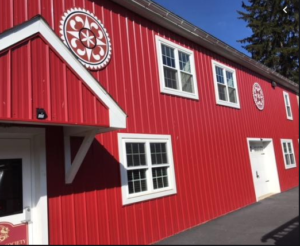
Refurbished barn at Camp Olympic. Available for event rentals and is the home of the LMTHS Bartholomew Center for Lower Macungie history.
Lastly, this section of the document envisioned the township working together with the East Penn School District. I’m happy to report that our staff meets regularly with key district staff. An example of collaboration is with the crossing guard program at Willow Lane elementary. Additionally, we continue to partner with the district on addressing sports field issues where township and district interests intersect.
I hope you find this useful. In a few days, I’ll overview section 2. Planning and Land Use. Thank you to Commissioner Brian Higgins who reminded Commissioners in January of this milestone. For each of these sections, I could probably highlight more but to keep these relatively short I’m limiting to the major highlights.
If there is any area you’d like to discuss in greater detail please don’t hesitate to reach out. Let me know if you have any questions,
Ron
Ronbeitler@gmail.com
P.S. On a sad note, as most know a few members of the 2009 committee have passed away. With that we take a moment to remember, Dennis Timmer, Bill Hansell and Bill Spaide.

